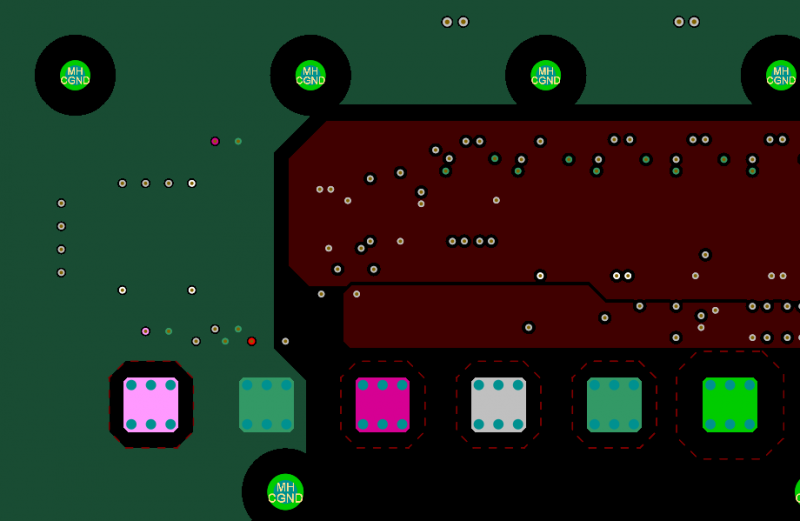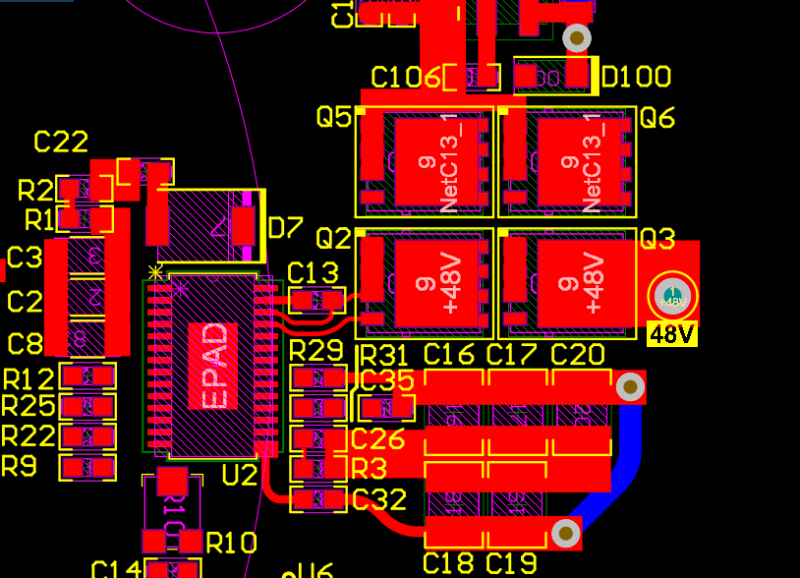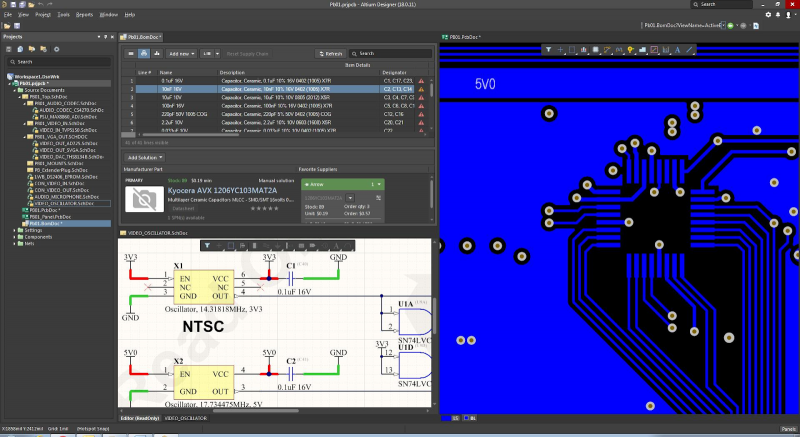Design and Simulate Your Power Supply PCB With the Best ECAD Software
A PCB for a power supply can be as difficult to design as high-speed networking equipment and complex embedded systems. These circuit board designs need to account for a range of behaviors and safety requirements, especially when dealing with high voltages and currents reaching the output of the power supply. In addition to safety standards involved in power supply PCBs, component selection is critical for ensuring the design can provide the desired power output without excessive noise, ringing, and heat generation.
With the right CAD tools and component sourcing features, it’s easy to find and add components to your power supply designs. You can then quickly create your layout while ensuring your design complies with basic industry standards on ESD, current and thermal management, safety and much more. Keep reading to see some important guidelines on power supply PCB design and how you can ensure
ALTIUM DESIGNER®
A unified power supply PCB design package with the industry’s best simulation and layout tools.
Appliances, industrial systems, computers, precision measurement equipment, and many other systems all need to have stable power from an integrated or external power supply unit. PCBs for power supply units need to balance many design requirements such as thermal management, EMI and noise, and safety. Satisfying all of these requirements can be difficult, especially when you don’t have the right design software.
The various circuits used in power supplies can also be very complex, requiring a range of components as well as simulations to verify designs. A power supply PCB designer needs a complete set of design tools to do their job while ensuring they comply with important design and safety requirements. To ensure your design satisfies basic requirements, we’ve compiled some important design guidelines to help you build safe and highly efficient PCBs for power supplies.
If you follow the right design guidelines and use the best PCB layout software, you can create a metal core PCB that can be fabricated at scale. Follow these guidelines to make sure your metal core PCB is manufacturable and follows basic industry standards.
Important Design Standards for Power Supply PCBs
There are many industry standards that apply to power supply PCBs, ranging from IPC standards to other industry-specific standards. Two of the basic IPC standards that will ensure your power supply not experience ESD or excessive temperature rise in conductors are:
- IPC-2221:This general design qualification standard applies to power supply designs by specifying creepage and clearance requirements. These requirements are meant to help prevent ESD between exposed conductors on the surface layer and between conductors on internal layers.
- IPC-2152: This standard applies to current carrying capacity in conductors with the intent of limiting temperature rise in conductors. This limit should be used to size polygons, copper pour, power planes, and power rails on the surface and internal layers.
Other important IPC standards will govern reliability, such as IPC-6012 and IPC-A-600, which may classify a power supply design as Class 2 or Class 3. UL/IEC standards are also important in multiple industries as these will specify safety requirements on a range of products.
A Complete CAD Package Helps You Design to Standards
Your PCB layout for your power supply will need a range of CAD tools for polygon design, defining signal and plane layers, creating power rails, and much more. With the best CAD tools in an application like Altium Designer, you can also place a heatsink in your design to help dissipate thermal loads and keep temperature low.
- Your power supply PCB will support a range of voltages during power conversion and regulation. Use design software that follows the IPC-2221 standard for conductor clearances.
Learn more about designing to IPC-2221 standards in high voltage designs.
- Follow the IPC-2152 standard to ensure conductors in your PCB layout will not experience excessive temperature rise.
Learn more about sizing conductors in your PCB layout to ensure low temperature rise.
- When it’s time to start creating your power supply PCB layout, your design might benefit from an alternative PCB stackup material, such as a ceramic or metal-core PCB.
Learn more about selecting alternative PCB substrate materials.

Once you size your conductors, create your PCB power and ground plane arrangement in Altium Designer.
Circuit Design, Simulation, and Analysis for Power Supply PCBs
Using the right schematic editor tools will give you the power to see into the electronics supply chain for power supply designs. No matter which topology you want to implement in your PCB design, you’ll need to find components that can provide the required output voltage and current in your power supply. A great schematic editor with hierarchical design tools will help you stay organized and create clear schematics with your required components.
To get started locating components for your power supply, determine the various components you’ll need for your particular power supply topology. You can then use the supply chain tools in Altium Designer to find component data, and you can start creating schematic symbols and PCB footprints for your parts. You can then start implementing your desired topology with the best PCB layout tools in Altium Designer.
Simulation, Design, and Layout Tools in One Program
Don’t resort to padding out your design tools with external simulation tools. You can use the SPICE engine in Altium Designer to simulate power distribution in your regulator circuits, and you can visualize important transient analysis results for the power output in your design. After fully evaluating the electrical behavior in your power supply circuits, you can use an integrated schematic capture tool to start your PCB layout. Only Altium Designer can guide you through the entire power supply design process without any external design and simulation programs.
- There are several standard voltage regulator topologies you can implement in your power supply with the right circuit design and simulation tools.
- The components you select will be a major determinant of reliability and stable electrical behavior.
Learn more about selecting components like inductors for switching regulators.
- As you start your PCB layout for your power supply, make sure you implement best DFM practices to ensure your board can easily pass through fabrication.

Build and simulate this high-quality PCB layouts for an LLC resonant converter in Altium Designer.
All Your Power Supply PCB Design Tools in One Application
By now it should be clear that designing safe power supplies requires multiple design tools, analysis steps, components, and simulations. To stay productive, power electronics designers need a complete set of PCB layout, simulation, and component sourcing tools, and designers can work at maximum productivity when all their design tools are in a single program.
Altium Designer’s major advantage over other ECAD applications is its integration. Everything needed to design power electronics and other advanced designs is located in a single program. You won’t need to add in external programs to finish your designs, you can do everything needed to get your board designed and manufactured with a single application.
Rules-Driven Design Helps Ensure Efficiency and Safety
The power of Altium Designer comes from its complete suite of rules-driven design tools. You can easily set important safety and electrical clearances as design rules in Altium Designer, and the internal design engine will check your power supply PCB layout against these standards as your board is created. No other PCB design application helps you build to the safety and reliability standards required in today’s circuit boards for power supplies, regulators, and power converters.
- Altium Designer helps ensure your PCB for your power supply complies with basic industry standards with its full suite of rules-driven design features.
Learn more about the complete set of PCB design tools in Altium Designer.
- Power supply PCBs can have a range of complex components that require careful 3D design to ensure fit to an enclosure while complying with important safety standards.
Learn more about Altium Designer’s native 3D PCB design features.
- When you’re ready to share your designs with your team members, you use the Altium 365 platform, the only cloud platform that lets you share and collaborate on complex circuit board projects.
Learn more about sharing your PCB project data with Altium 365.

Altium Designer includes everything needed to ensure safety and compliance with industry standards.
Altium Designer gives you access to a full suite of PCB design tools that help you create highly efficient and safe power supply designs. Forget about using multiple programs for design, layout, and simulation, use the industry’s best set of PCB design tools in a powerful application.
Altium Designer on Altium 365 delivers an unprecedented amount of integration to the electronics industry until now relegated to the world of software development, allowing designers to work from home and reach unprecedented levels of efficiency.
We have only scratched the surface of what is possible to do with Altium Designer on Altium 365. You can check the product page for a more in-depth feature description or one of the On-Demand Webinars.
